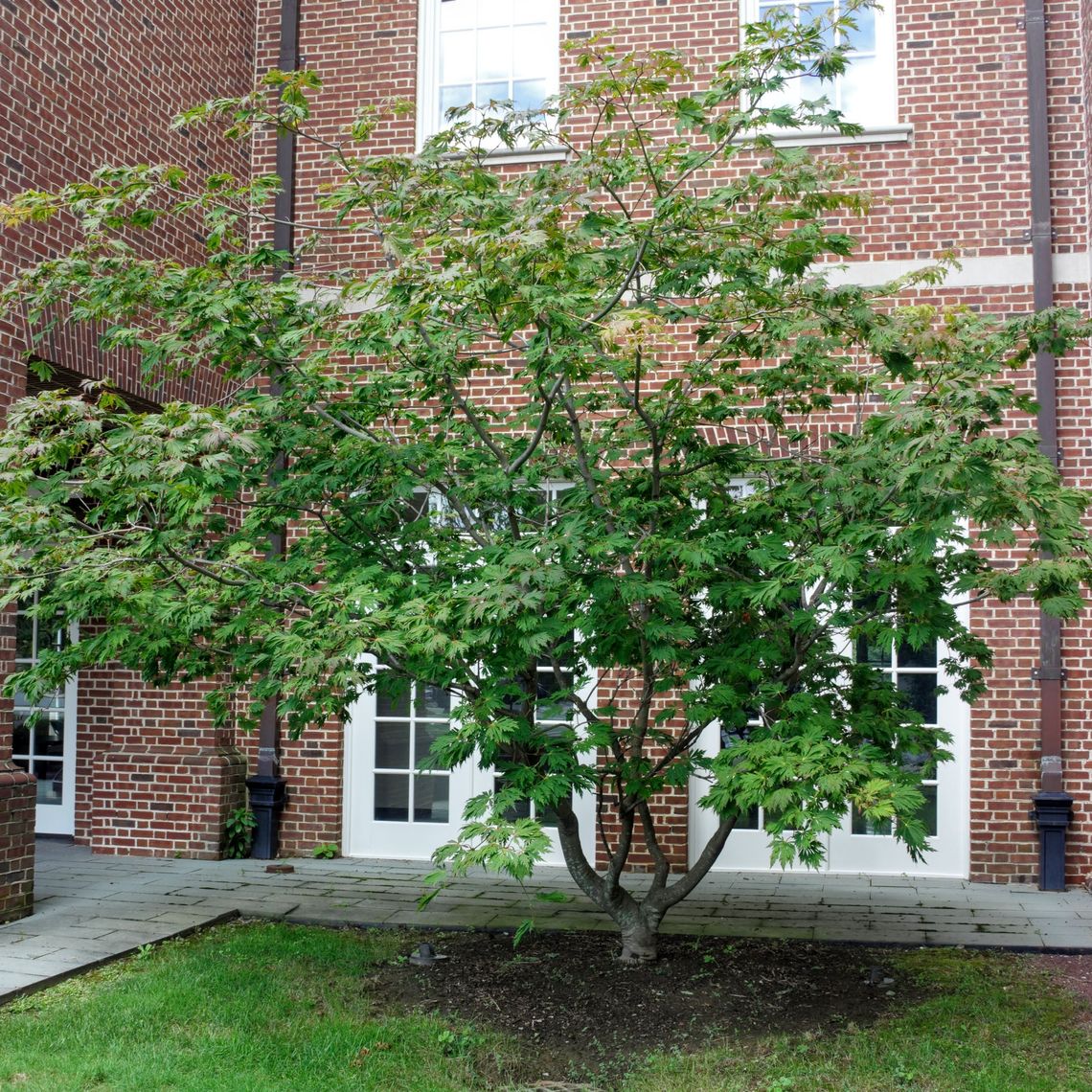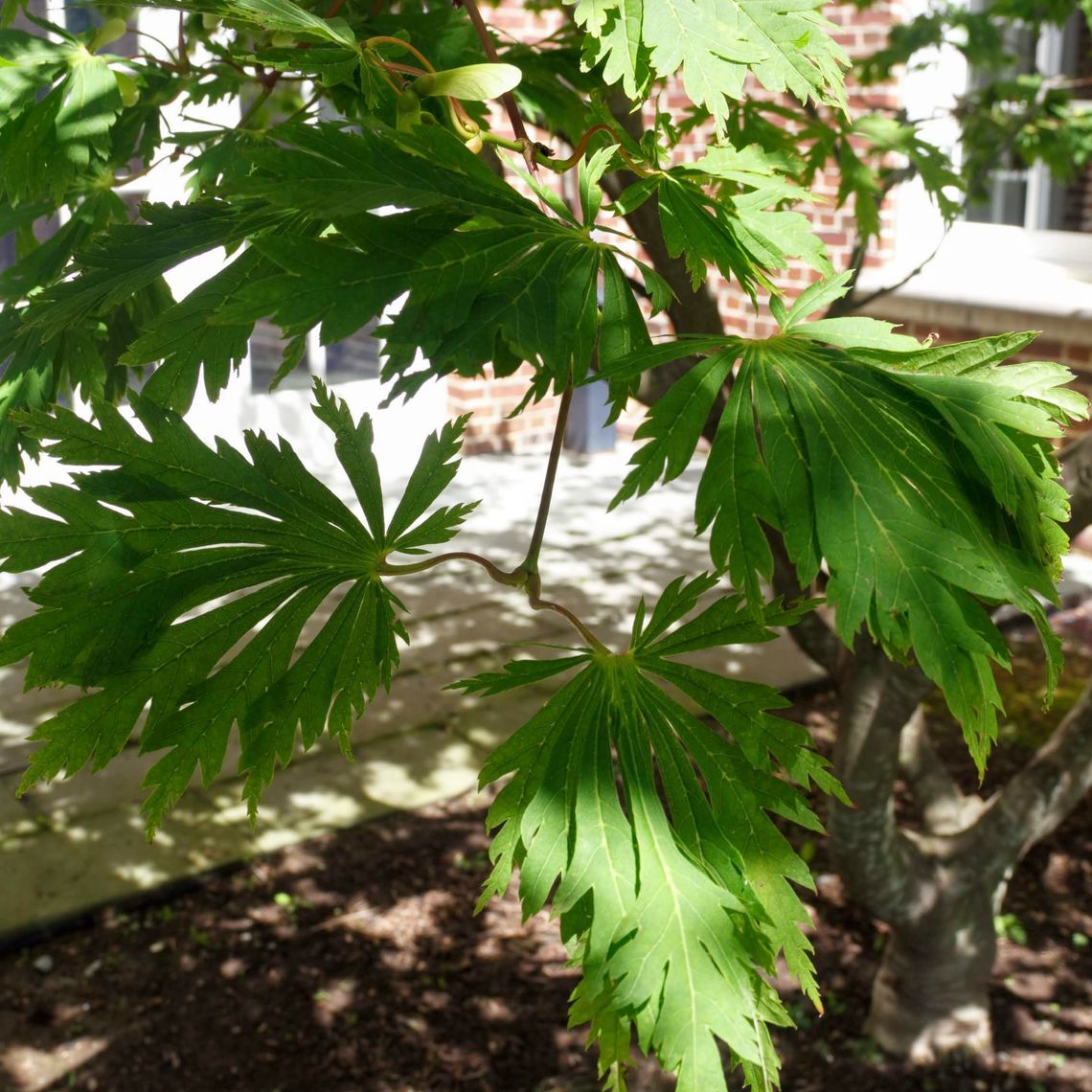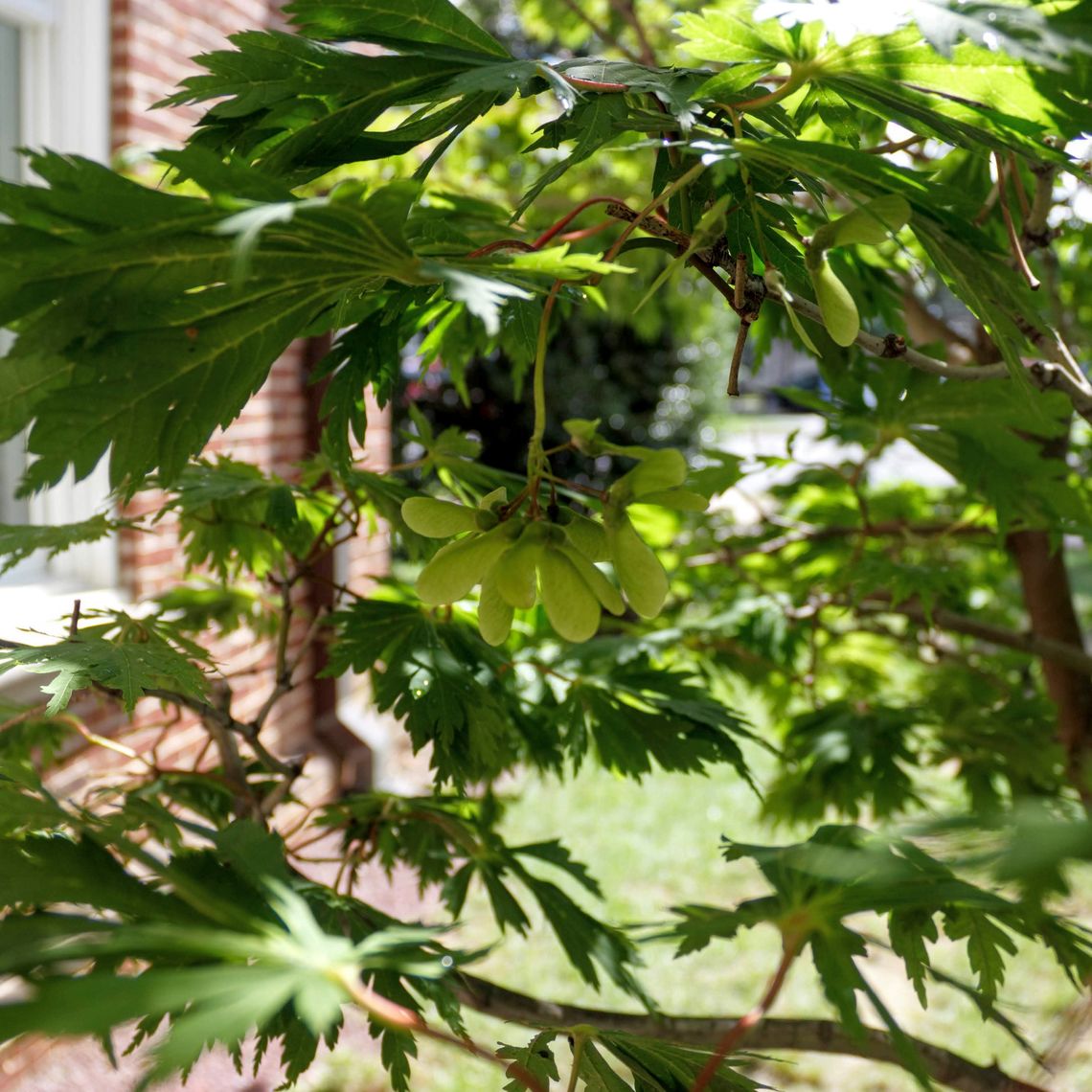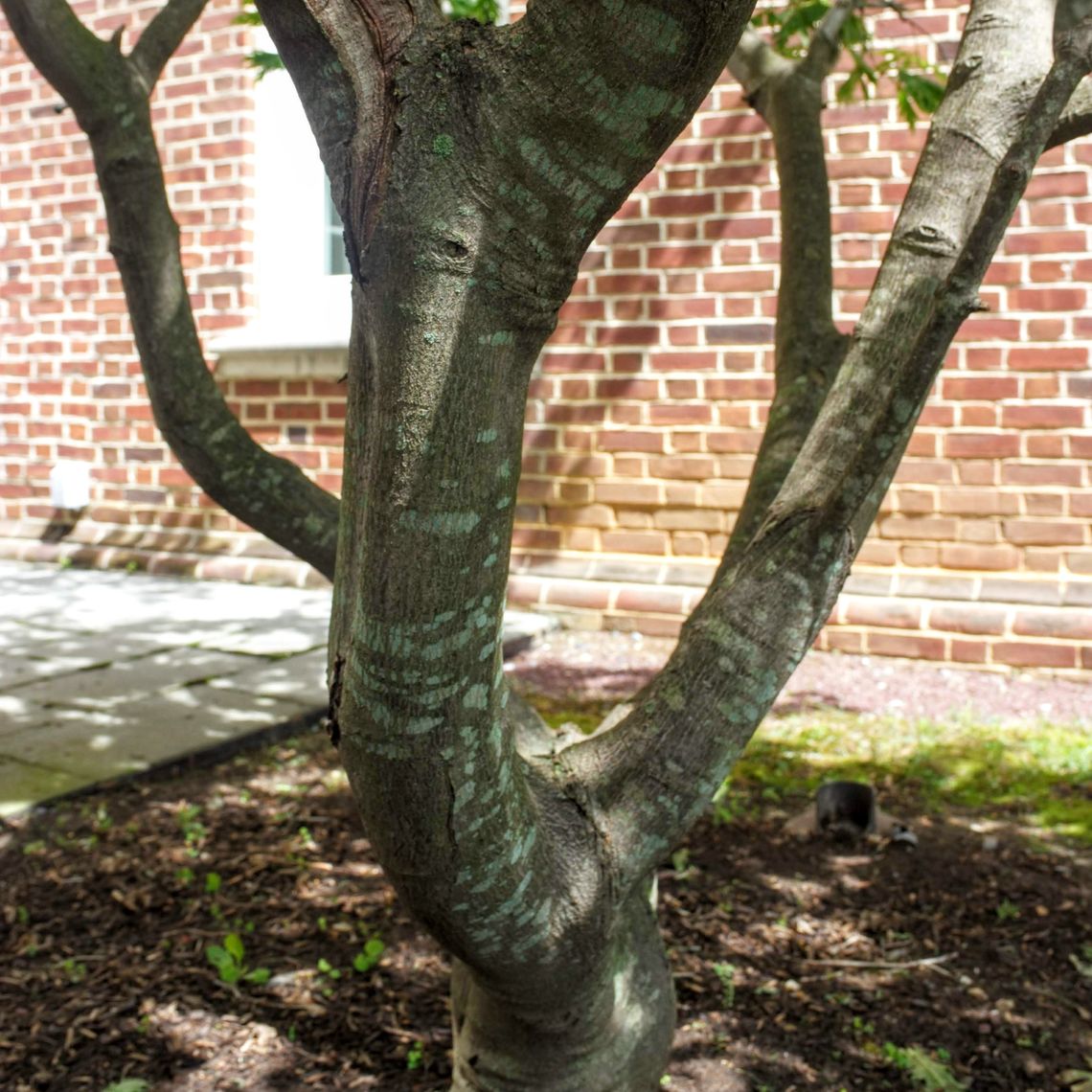Japanese Maple (Acer palmatum)
The Japanese maple is often grown as a large shrub, though may also appear as a small, broad and rounded tree. Its leaves are composed of 5-9 pointed leaflets that range in color from red-purple to green. The leaflets are arranged circularly at the end of the petiole, giving each leaf a star-like shape. In the fall, these leaves will turn red and yellow. This tree attracts insect pollinators.
Family: Aceraceae (maple)
Characteristics: The green to red-purple leaves are finely serrated and composed of 5-9 pointed leaflets, which are each 2-5 inches long. In the fall, leaves turn red and yellow and will remain on the tree for some time. Like all maples, the Japanese maple produces samaras (paired winged seeds). Bark is smooth and gray. When grown as a small upright tree, this tree has a broad and rounded shape with low lying branches. It may also grow as a large shrub. This tree usually grows 15-25 feet high and wide, but can grow up to 40 feet high.
Foliage: Deciduous (leaves lost seasonally)
Geographic Origin: Korea, Japan, China (non-native)
Cultivation Notes: Requires low maintenance. Does best in full sun to part-shade. Prefers acidic, moist, and well-drained soil. Does well in residential areas, parks, and under utility lines.
Number on Campus: 9
Sources: Dirr, Morton Arboretum, Missouri Botanical Garden




